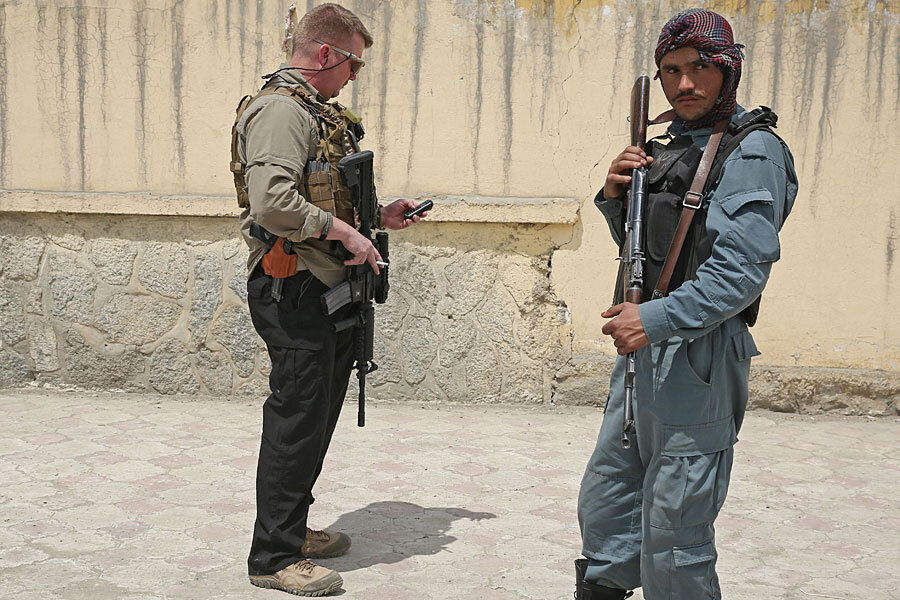Americans killed in Kabul: what it may signal about Afghanistan’s future
Loading...
| Washington
Even after a relatively peaceful first round of presidential elections in Afghanistan, the US military transition out of the turbulent country is promising to be exceedingly complex, defense analysts say.
The shooting death of three US citizens in Kabul Thursday highlights growing discontent with the US troop presence on the ground. But while lawmakers begin debate next week on just how much money to give the Pentagon for its combat operations, a war-weary American public has yet to have any sort of national discussion about whether US troops should stay or go.
“We haven’t actually debated whether we should stay in Afghanistan, and why we should stay,” says Anthony Cordesman, a defense analyst at the Center for Strategic and International Studies (CSIS) in Washington, D.C.
In today’s era of competing demands of big-budget security concerns, “That’s a critical problem,” Dr. Cordesman says, even as the Pentagon has sent Congress a “placeholder” request of nearly $80 billion for war operations in 2015.
Pentagon planners are still working through a handful of scenarios for reducing the US military presence to between zero and 10,000 US troops by the end of the year, depending on what President Obama decides. There are currently 30,000 US troops in Afghanistan.
Some analysts warn that reducing the US forces to low levels will result in the “rapid erosion of stability” in the country, since Afghan security forces will be unable to operate with so little international support. “We can expect the return of Al Qaeda there, as it has returned to Iraq. We can expect, in other words, yet another instance of snatching failure from the jaws of success,” says Frederick Kagan, a resident scholar at the American Enterprise Institute (AEI) and an architect of former President George W. Bush’s “surge” in Iraq.
But it is not at all clear that the Obama administration’s surge in Afghanistan – when there was a high of 100,000 US troops in the country – worked at all, Dr. Cordesman says, particularly without analysts’ access to key data or transparency from the International Security Assistance Force (ISAF).
Last year, for example, the US-led military coalition stopped publishing figures related to attacks by the Taliban. “Key statistics haven’t been reported in more than a year,” Cordesman adds. “We won’t know the balance of power until the US and ISAF military are largely gone and a new government is in place.”
That’s a great risk, warn some US officials. Gen. Joseph Dunford, the commander of US forces in Afghanistan, told lawmakers in March that it would be difficult for a US force of fewer than 10,000 troops to defend itself. He also predicted that Afghanistan’s military capabilities would deteriorate “fairly quickly” without the support of NATO troops.
This has already begun happening in some areas of the country, analysts say. In the Helmand Province of southern Afghanistan, security forces currently have “no control in an area where the Marines fought a remarkably difficult battle,” Cordesman notes.
In spite of that military effort, Helmand has “sharply increased” its narcotics production, which “most benefits the Taliban.”
Even in the wake of the presidential election’s first round, Afghanistan “is still essentially a country governed by power brokers and not the electoral result,” he adds.
The US withdrawal of combat forces by 2014 will spur a scramble for scarce resources among these power brokers in a country that was ranked 175th worst out of 177 countries for corruption by Transparency International, Cordesman says.
“We all know this will be a country at war,” he adds, “long after the end of this year.”





